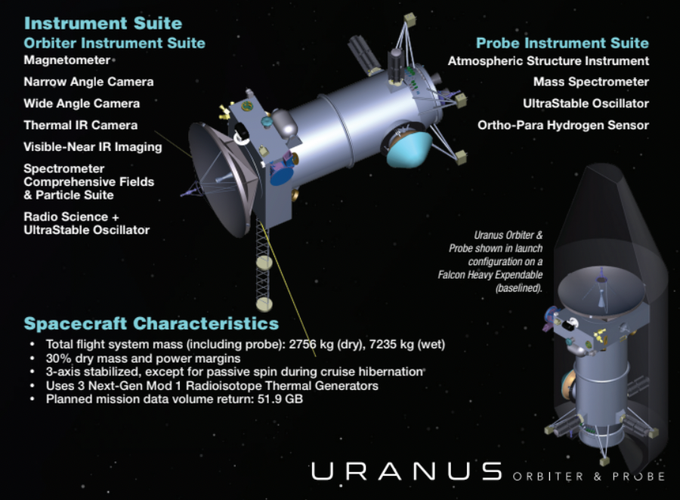SpaceX Launched Uranus Mission: Everything You Should Know
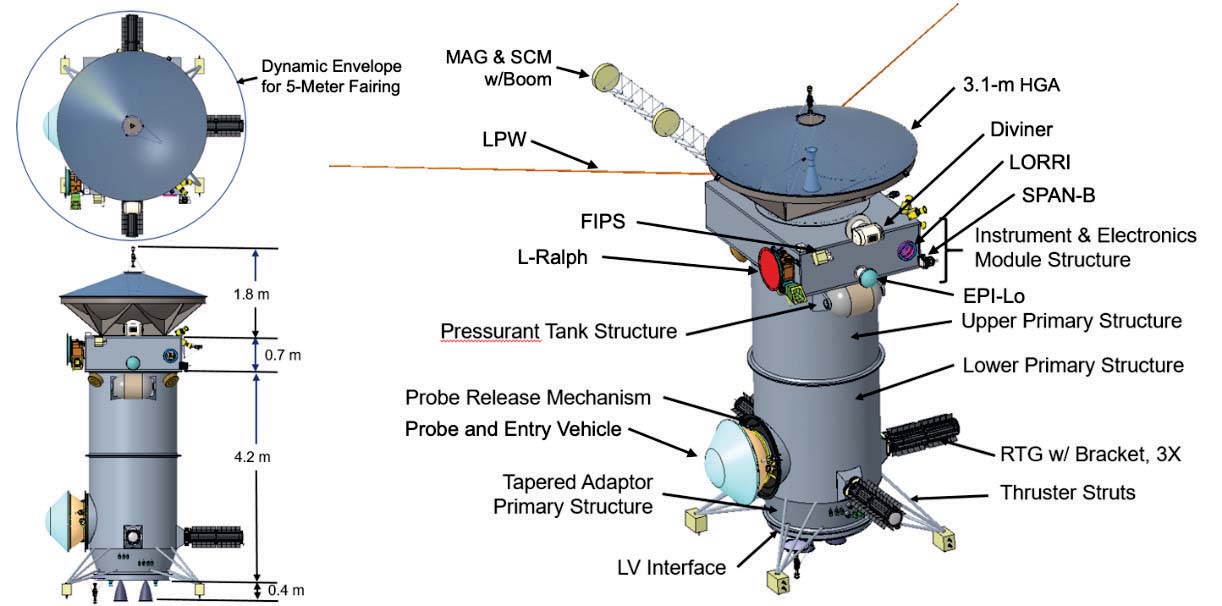
The National Academies of Sciences, Engineering, and Medicine have released their most recent decadal study of planetary research and astrobiology, recommending that NASA prioritise the creation of a flagship mission to Uranus based on SpaceX's Falcon Heavy rocket.
Known as the Uranus Orbiter and Probe, or UOP, the mission plan has been under development for several years by a team of scientists and engineers from NASA, the University of California, and Johns Hopkins University. Indeed, a very similar notion was ranked third in the Academies' headline proposals for the 2013–2022 decadal survey, highlighting its key importance and potential usefulness in the eyes of the study's hundreds of contributors.
According to its architects, the Uranus Orbiter and Probe in its current configuration has the ability to fully or substantially address 11 of the 12 key questions addressed in the last Decadal Survey.
Additionally, the poll implies that if not for the development of one specific technology, the choice between Uranus and Neptune would have been a toss-up. SpaceX's Falcon Heavy rocket serves as the cornerstone.
Advertisement
While the survey's authors do not specifically mention SpaceX in relation to UOP, they do write that "a Uranus mission is preferred since an end-to-end mission concept exists that can be implemented on currently accessible launch vehicles in the 2023–2032 decade." In actuality, it appears as though there is only one launch vehicle: Falcon Heavy.
There are theoretically three more options: United Launch Alliance's (ULA) Vulcan Centaur, Blue Origin's New Glenn, and NASA's own Space Launch System (SLS).
NASA's Europa Clipper orbiter – which was originally manifested on SLS but was later shifted to SpaceX's Falcon Heavy to avoid significant launch delays – has helped demonstrate that SLS is not viable for non-Artemis Program missions without significant production improvements and significant workarounds or design changes.
While capable in many ways, Blue Origin's reusable New Glenn rocket appears to have severely limited performance beyond Earth orbit – significantly less than what UOP demands – and is unlikely to launch before 2024 or 2025. It is possible that an expendable New Glenn will suffice, although Blue Origin has never discussed this possibility, and even if it does, the rocket's expendable performance may fall short.
Advertisement
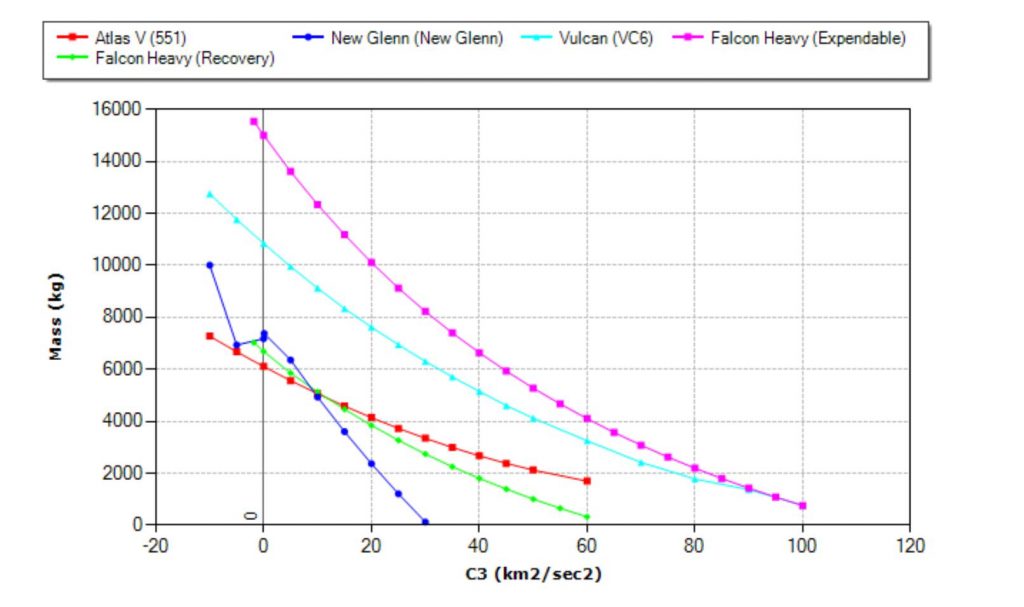
NASA’s ELVPerf data. UOP sits around a C3 value of 20-35.
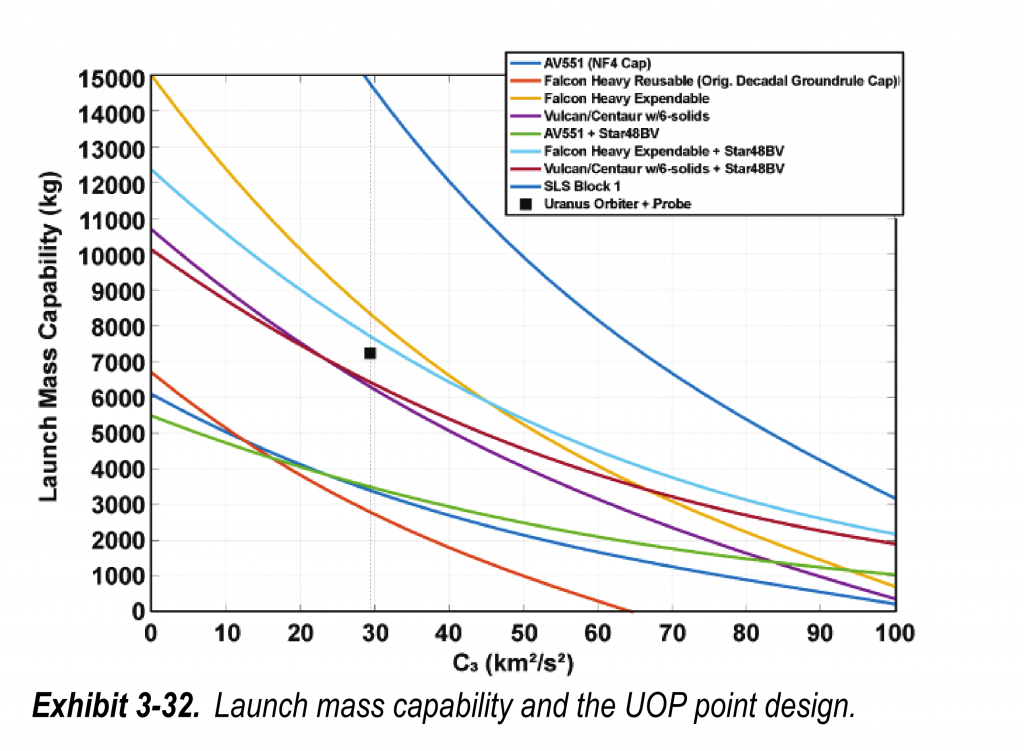
The UOP team’s similar analysis.
Finally, ULA's expendable Vulcan Centaur rocket has not yet launched, and its debut is likely to be pushed out to 2023. More importantly, according to official data provided by the company to a NASA-run performance calculator, even the most capable variant of Vulcan (VC6) with six solid rocket boosters (SRBs) lacks the performance required to launch the Uranus Orbiter and Probe (7235 kg/15,950 lb) on seven of the mission's preferred trajectories.
UOP may theoretically launch through three additional secondary windows, but only with the addition of a Venus gravity assist, which would necessitate significant design adjustments to protect the spacecraft while going considerably closer to the sun.
According to NASA's calculator, a fully expendable Falcon Heavy rocket equipped with a standard payload fairing could launch approximately 8.5–10 tonnes (18,700–22,000 lb) to UOP's preferred trajectories, leaving a very healthy margin for spacecraft weight gain or launch underperformance and likely enabling a longer launch window for each opportunity.
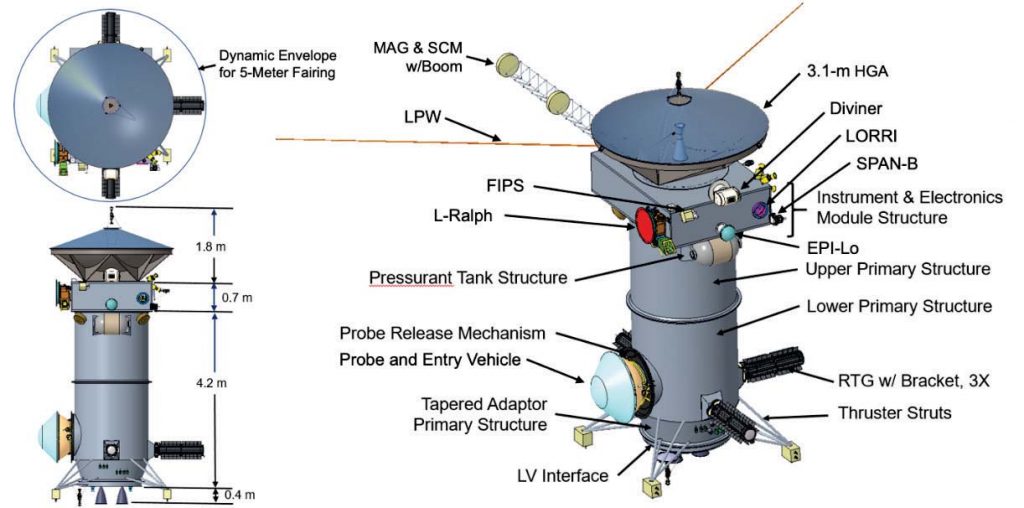
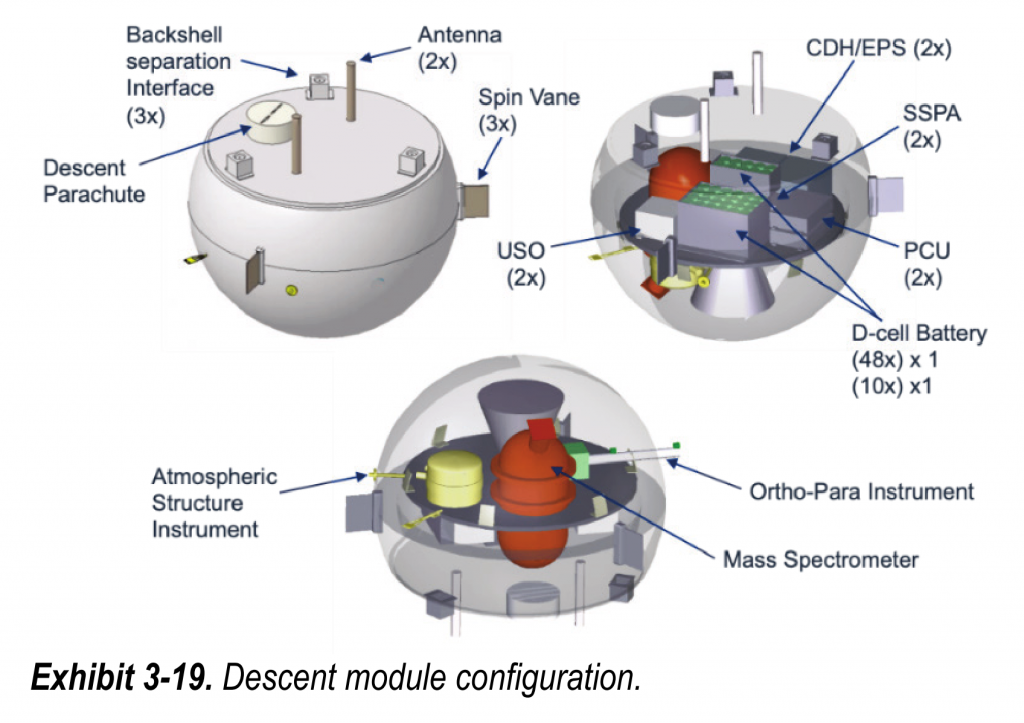
The Uranus Orbiter and Probe.
If NASA accepts the survey's findings, decides to create the Uranus Orbiter and Probe, and also plans on the Academies' optimistic assumption of an average budget increase of 18 percent from 2023 to 2032, work on the chosen 2031 launch window might begin in earnest as early as 2024. UOP would arrive in orbit around Uranus in late 2044 or early 2045, weighing around five metric tonnes (11,000 kg).
The primary science mission would begin with the deployment of a tiny atmospheric probe to examine the composition and behaviour of the planet's unusual atmosphere, which is thought to be volatile, prone to massive and violent storms, and home to some of the solar system's most extreme winds. The probe would weigh 270 kilogrammes (600 lb) and have a maximum survival time of a few hours.
The orbiter, on the other hand, would continue its four-year tour of the Uranian system, watching and analysing the ice giant and its rings, magnetosphere, and 27+ moons. Uranus itself belongs to what may be the most frequent class of exoplanets in the cosmos, making an in-depth study of it critical for exoplanet science in general.
Additionally, similar to other moons orbiting Saturn and Jupiter, it is possible that one or more Uranian moons have liquid water seas formed by tidal heating, adding to the list of extraterrestrial entities with habitable habitats or alien life.
Advertisement
